It is a mistake to try to reduce the frequency or impact of drought through something narrowly defined as “drought policy”. The problems in dealing with drought can only be dealt with through an integrated approach to the management of Australia’s natural resources.
As the former Prime Minister Malcolm Turnbull reminded us in a recent radio interview, in a hot, flat and relatively dry continent with poor soils, “we have got to be smart about the way we use water.” (See previous commentary on Turnbull’s interview with ABC Broken Hill.)
When a prolonged period of below-average rainfall threatens serious human, animal and ecological costs, specific emergency assistance should be available, subject to known, fixed (and, if possible, objective) criteria.
But at every moment, in good times and bad, public policy should be dealing with water management in all its aspects.
Some will argue that, for both political and professional reasons, an integrated, holistic approach to natural resource management across the nation is unlikely. A report card on the key elements of national water management shows that progress has been made and that further opportunities exist, with the management of groundwater resources being an area that is not as well advanced and understood as others.
There are nine key elements of water management in Australia.
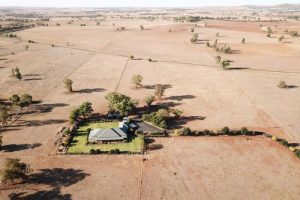
1. Management of the Murray-Darling Basin
The management of Australia’s water resources basically starts and ends with the Murray-Darling Basin (MDB), both because of its size and because of the political, economic and social challenges it poses. It covers a million square kilometres (about 14 percent of Australia’s landmass), is home to over two million people and in it is produced around one-third of the national food supply.
Management of the MDB has been famously difficult due to the complexity of the issue and the fact that the Commonwealth and four state governments all have vital interests in it. If water management in the MDB is done well, the processes and lessons learned can be applied in other catchments.
The central challenges are twofold: to be sure that there is an appropriate balance between waters withdrawn from the system, mainly for irrigation, and the waters left in it for environmental purposes; and to be sure that there is a fair balance between the four states along the rivers’ path.
Currently there is agreement among all parties to a Basin Plan, with the four states agreeing to develop a compact to enforce the agreed water rules. Despite the dry times in much of the eastern States, there are good signs of continued commitment to the Plan.
However, below-average rainfall for a prolonged period will test the political strength of such an agreement and potentially threaten the ecological sustainability of the Basin.
2. Decisions about water infrastructure
There has been much debate about whether Australia has an “infrastructure deficit” and, if so, how large it is and what elements it comprises.
“Australia has nearly 600 different local, state and territory Governments that, together with the Australian Government, fund and plan infrastructure. Through this multitude of players, our infrastructure development is slow and delivery risks are high, which constrains our productivity and makes our projects less attractive for potential investors.” (The National Infrastructure Plan, Infrastructure Australia, 2013.)
Given the proportion of Australia’s population who live in the major cities and the undoubted congestion they experience, the bulk of recent discussions about infrastructure has been about transport: roads, bridges, railways and public transport systems. However, the management of Australia’s water resource is critically affected by decisions made on infrastructure, including those made at the national level.
Infrastructure for the storage, reticulation and application of water in agriculture and other industries is one of those areas in which new capital spending may not be necessary. This is because there has been, and remains, capacity to make better use of existing infrastructure. It is not a question of building new irrigation systems from scratch, but what additions and adjustments should be made to the existing system.
A significant new focal point relating indirectly to water infrastructure has emerged as a result of the nation’s electricity generation woes. There are plans for the construction of ‘Snowy 2.0’. Whatever the truth about the costs and benefits of Snowy 2.0, it is not a matter that should affect inter-jurisdictional agreement about the allocation of water in the system.
The 2016-17 Federal Budget provided funds for a National Water Infrastructure Loan Facility and for the National Water Infrastructure Development Fund. The latter is “accelerating the detailed planning and construction of water infrastructure projects that will deliver new and affordable water, enhance water security and help stimulate regional economic development including through primary industries and new and expanded agriculture”.
Money from the Fund is provided to state and territory governments on the basis of their matching dollars. A substantial proportion of the Fund is to be committed to water infrastructure feasibility studies and projects in northern Australia.
Referring to the Rookwood Weir near Rockhampton, Michael McCormack said: “Water infrastructure is vital for drought-proofing communities and flood mitigation.” His colleague Matt Canavan, more colourfully, has said that Rookwood Weir is an economic game changer for the region: “a ribbon of water through dusty plains that will fuel a billion-dollar boom in farming output across Central Queensland”.
3. Facilitation of integrated catchment management
Integrated catchment management (ICM) is now accepted as a valuable means of protecting land and water resources, native vegetation and biodiversity.
The approach recognises that land and water use and environmental impacts are interconnected and that actions in a catchment have cumulative impacts on areas downstream. It sees those involved in land use planning, natural resource management, agriculture, conservation and the community working together to plan and manage programs at catchment level.
The Murray-Darling Basin Plan can in effect be seen as a major ICM program – perhaps the largest in the world.
ICM has largely been driven by voluntary action through the Landcare movement. To be most effective, the geographic units within which ICM is being applied need to be recognised (or mandated) in statutory plans or regulations that have legal force.
Also, to ensure effective catchment planning and local action, data must be collected and managed at an appropriate scale, and must be easily available to land owners and managers.
In the right conditions ICM is an effective means for translating national and state natural resource management strategies into local action.
4. The encouragement of regenerative agriculture
As regenerative farmer Charles Massy has written:
Agriculture, in occupying 38 percent of the Earth’s terrestrial surface, is both the largest user of land on the planet and humankind’s largest engineered ecosystem.
Because it is based on plants, which take carbon out of the atmosphere to make and store sugars through photosynthesis, and because these plants have roots growing in the ground, a healthy agriculture has the potential to bury huge amounts of carbon for long periods.
Excessive carbon dioxide in the atmosphere (largely due to the release of long-stored carbon through burning fossil fuels) is, we now know, one of the key causes of the greenhouse effect. Absorption of excess carbon dioxide also makes the world’s oceans more acidic.
Moreover, when a healthy agriculture puts more long-lasting carbon into the soil while minimising the loss of such carbon, this in turn has a major impact on the water cycle and its crucial role in thermoregulation (i.e. climate control) of the planet.
But the problem is that traditional industrial agriculture – through practices such as burning vegetation for land clearing, using fossil fuels (in fertilisers and chemicals, and to power farm machinery), overgrazing, ploughing and fallowing – emits, rather than stores, carbon.
But it need not be this way. An ecologically and socially enhancing agriculture – what I call ‘regenerative agriculture’ – can reverse this harmful carbon-emitting signature of industrial agriculture. It can do this via various methods, but all are based around revegetation and inculcating healthy, living soils…”
(Call of the Reed Warbler – A New Agriculture, A New Earth, UQP, 2017.)
5. Short-term emergency support
It is a mistake to try to reduce the frequency or impact of drought through something narrowly defined as drought policy.
The only part of drought that ought to be treated separately is the provision, in certain specified and serious circumstances, of short-term assistance to minimise the costs to humans and animals of a situation that could not reasonably have been expected or planned for.
The Commonwealth and State Governments should agree on objective criteria that will be used to ‘switch on’ this short-term emergency assistance – perhaps region by region, to reflect the disparate situations relating to natural resources and climatic incursions.
These are the only circumstances in which the terms ‘drought support’ and ‘drought policy’ should apply.

6. The science of climate and water management
The geological record shows that the Earth has experienced dramatic changes in temperature within the period of a human generation in the distant past.
This attests to the fact that climate is affected by feedback, making it susceptible to small changes in conditions. These conditions are “oceanic processes (such as oceanic circulation), biotic processes (ie. plants), variations in solar radiation received by Earth, plate tectonics and volcanic eruptions, and human-induced alterations of the natural world”.
This last is what is currently causing global warming and the ‘climate change’ now of such concern. The mechanism for these human-induced effects is the proportion of greenhouse gases in the atmosphere: including methane, chlorofluorocarbons and carbon dioxide.
The science of climate is so complex that it is still not possible to say what connections there are between each successive new incident of drought, flood or fire – feast or famine – and climate change as defined.
The other sciences involved in natural resource management, in contrast, are relatively settled.
Understandings based on the scientific method must be the basis of decisions and action about all aspects of natural resource management, including those relating to water.
Australia has a long and proud record of research and development in the area, although recent trends in the level of public funding for scientific research across the board is causing concern.
Over the last few years, and fuelled by the last drought, significant investment has been made in water information in the Bureau of Meteorology.
This provides ready public access to information, for the first time, on surface water, groundwater and soil moisture. Taken together these give a detailed and accurate measure of land-based system capability.
One of the BOM’s maps is of Landscape Water Balance, information on a daily basis about Root zone soil moisture, Upper soil moisture, Lower soil moisture, Deep soil moisture, Deep drainage, Actual evapotranspiration, Potential evapotranspiration, Runoff and Precipitation.
Such rich data has never before been available and provides one of the bases for an integrated approach to water management. It is unclear what use has been made of these data in decisions relating to the current dry in NSW and Queensland.
7. Agriculture, settlement and town water
Australia is familiar with patterns of agricultural production being prescribed by Nature. Best-known in the category is Goyder’s Line, which, in effect, joins places in South Australia with an average annual rainfall of 10 inches (250 mm). The line was conceived and ‘mapped’ in 1865 by George Goyder, Surveyor-General to South Australia, with areas to the line’s north being judged “liable to drought” and those to the south deemed arable.
Such lines have already been inexorably re-drawn by changes in rainfall pattern and more can be expected.
Although it tends to receive less public attention than the effects of drought on farmers and their animals, the pattern of rainfall also has serious implication for settlement in rural Australia.
An increasing number of rural places are seeking growth and development through the settlement of immigrants. If Australia’s population is to continue to grow apace and somehow to be actively distributed across rural and regional areas, town water supplies constitute a critical matter for attention.

8. Water reticulation and on-farm storage
This element of national water management relates to the ways in which water is transported from place to place, and how run-off is captured and stored – including on farms.
Irrigation channels and rivers/creeks/lakes are the most important sources of the water used in agriculture. In 2016-17, just over 22,000 (of 88,000) agricultural businesses used water for productive purposes.
The total volume of water used was 9.9 million megalitres, of which 9.1 million was used for irrigation. Of the 9.9 million, 37 percent was sourced from irrigation channels, 29 percent from creeks, rivers and lakes, 18 percent from groundwater and 13 percent from on-farm dams or tanks. (http://www.abs.gov.au/ausstats/abs@.nsf/mf/4618.0)
In his Broken Hill interview, Malcolm Turnbull said:
Wherever we can, what we need to do in managing water in a hot, dry continent, is where we can possibly do it, we should pipe it rather than running it in open channels.
Where we can configure storages so that they are deeper, then you have less evaporation”.
Over the last decade, investments costing several billion dollars have been made in replacing inefficient channels with pipelines and increasing the efficiency of remaining open channels to reduce water loss. In effect these investments in the efficiency of water infrastructure purchased water for the environment. The easy projects have been completed.
The development of Northern Australia constantly faces the challenge of finding deep, efficient water storage sites.
9. Sustainable groundwater management
Groundwater resources are absolutely critical in Australia and in some areas provide the only reliable water supply for settlements and industry.
There are currently some serious arguments relating to the impact of various categories of land use on groundwater resources. Chief among them is coal seam gas exploration and production. Science and political processes will continue to be tested by this phenomenon and it is to be hoped that appropriate decisions will be made with minimal divisiveness among the people and communities involved.
Monitoring of groundwater resources will remain critical with increased pressure likely from industry, climate change and, potentially, from closer settlement. This is another area in which investment in the BOM’s data capacities has made great strides forward.
The relationship with drought is obvious. In dry times when run-off is reduced, a sustainable groundwater resource is even more critical.
In conclusion
The environmental and economic prosperity of Australia depends on water. Succeeding with water management at national, state, catchment and local areas is therefore critical. For this success to be assured, water management practices will need to continue to be determined by science and understanding.
In times of water shortage, the focus must remain an all elements of its management and incidence of drought should not be allowed to affect the strategic course of natural resource management activity.
As a nation we need to continue to be sympathetic to any unmanageable events that endanger the health and well-being of citizens. But sympathy is no basis for the development of longer term policies that will, among other things, minimise the incidence and extent of drought.



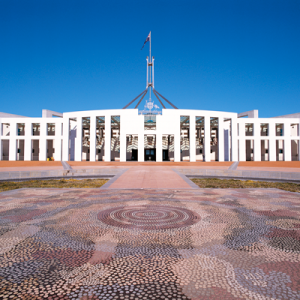












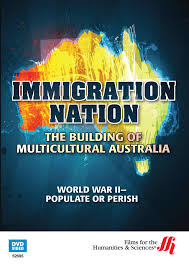
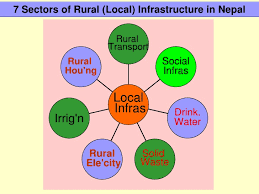

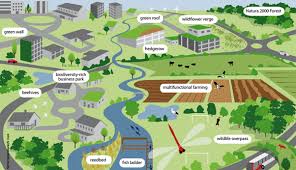

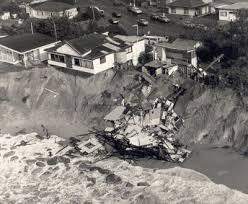










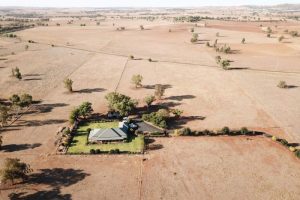
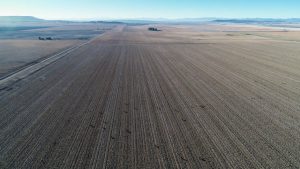
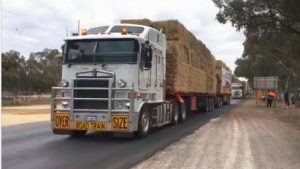
 There have nevertheless been some tangible improvements to the system. The severity of the 1980-83 drought was one of the drivers for John Kerin to establish the Rural Financial Counselling Service, the services of which have been lauded by the Prime Minister and his Ministers over the past few weeks.
There have nevertheless been some tangible improvements to the system. The severity of the 1980-83 drought was one of the drivers for John Kerin to establish the Rural Financial Counselling Service, the services of which have been lauded by the Prime Minister and his Ministers over the past few weeks.

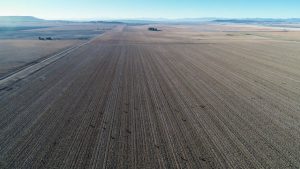


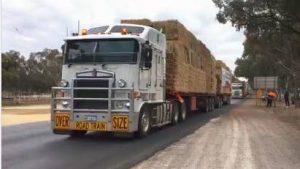 In Part 3 of this series – Too much ‘drought’, not enough ‘water management’ – Gregory will argue that the problem begins with the separation of drought from other aspects of the management of Australia’s natural resources.
In Part 3 of this series – Too much ‘drought’, not enough ‘water management’ – Gregory will argue that the problem begins with the separation of drought from other aspects of the management of Australia’s natural resources.